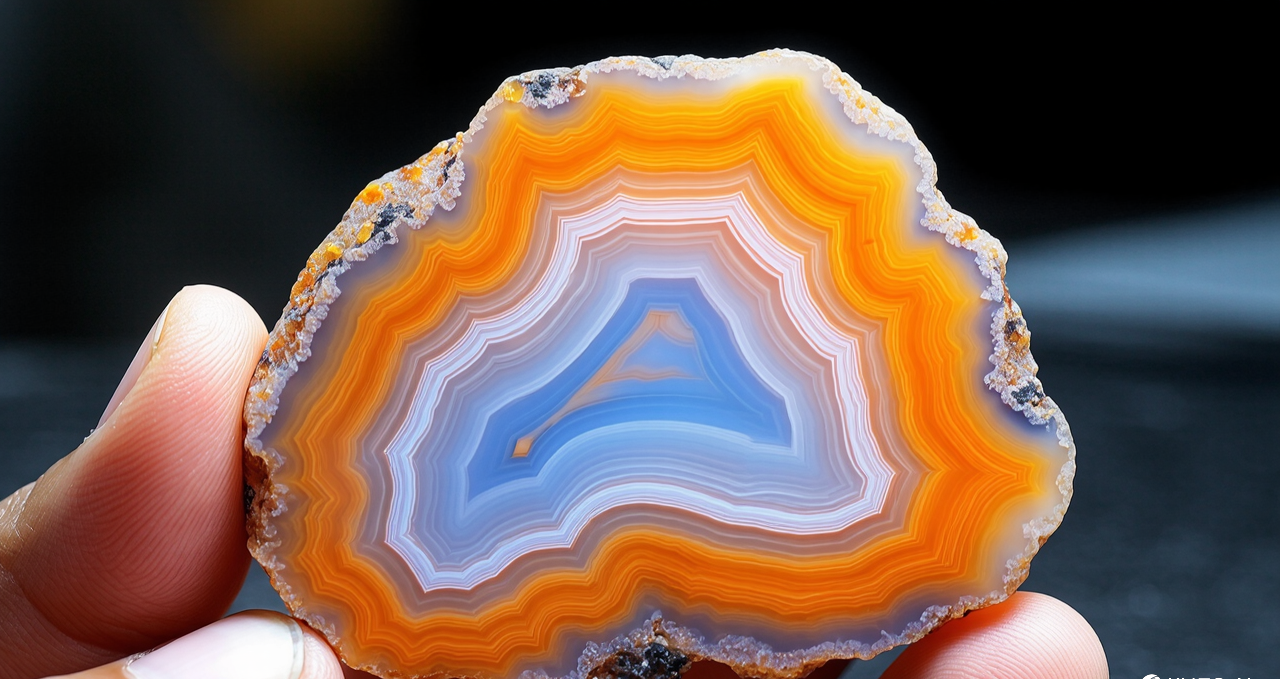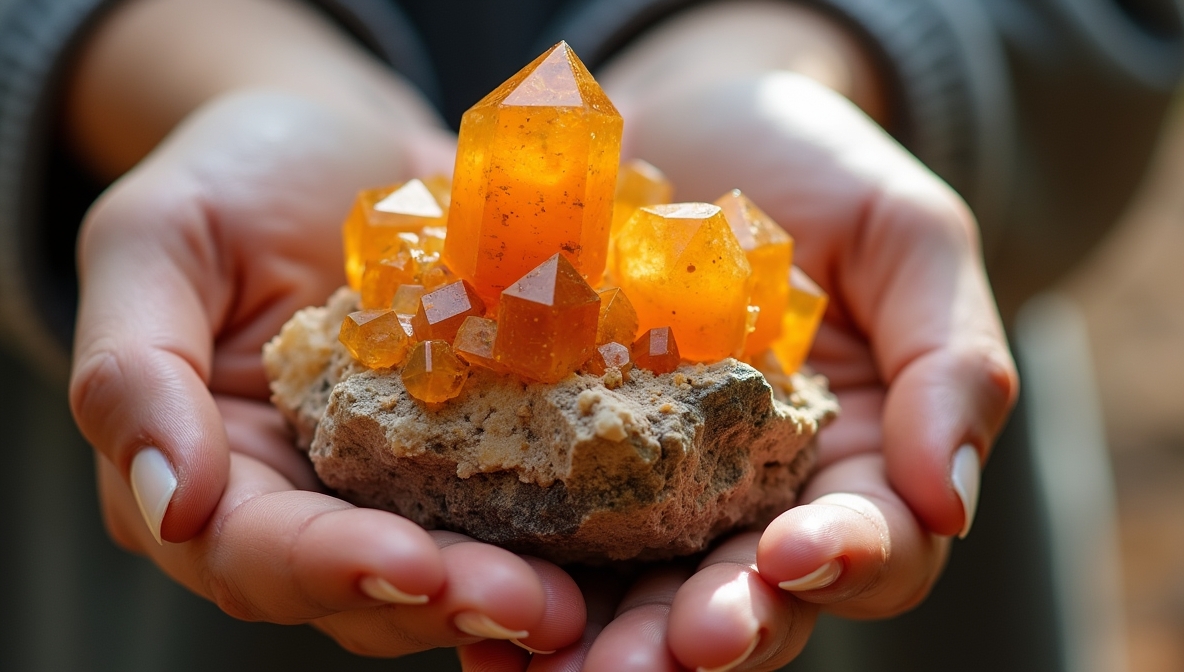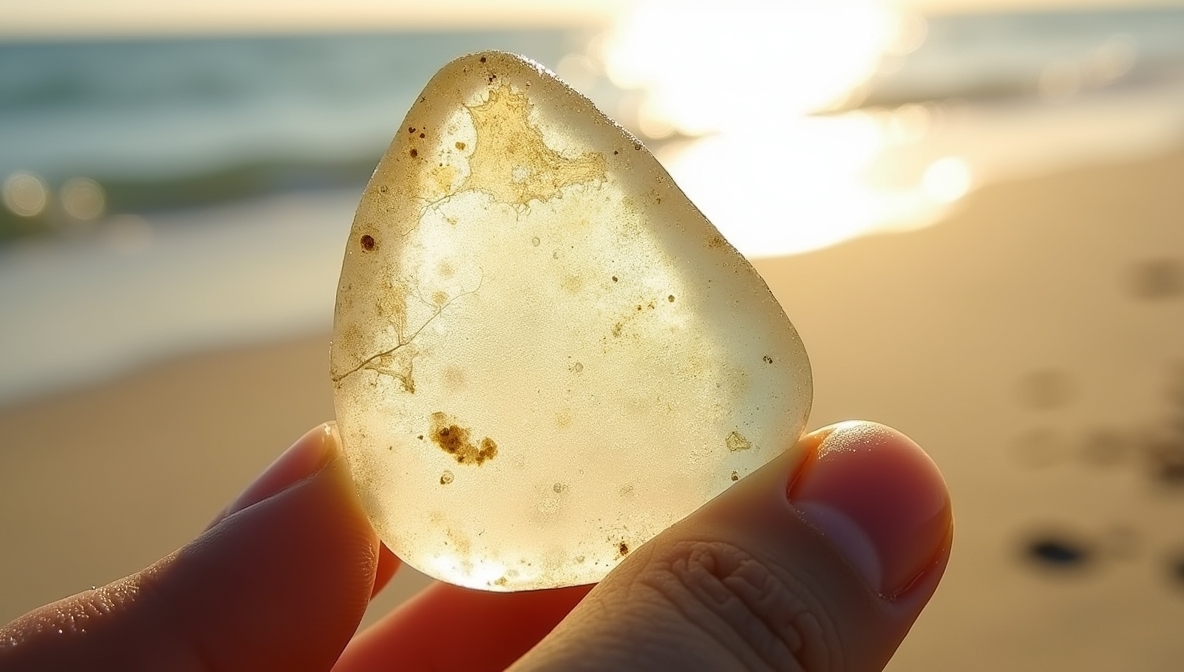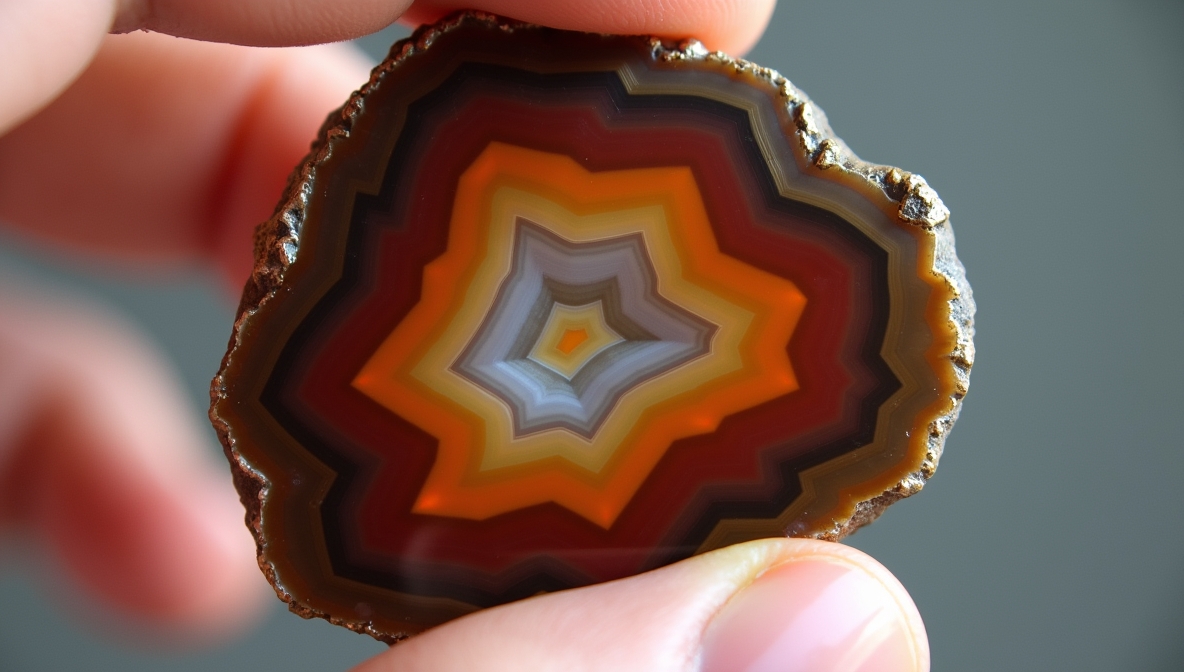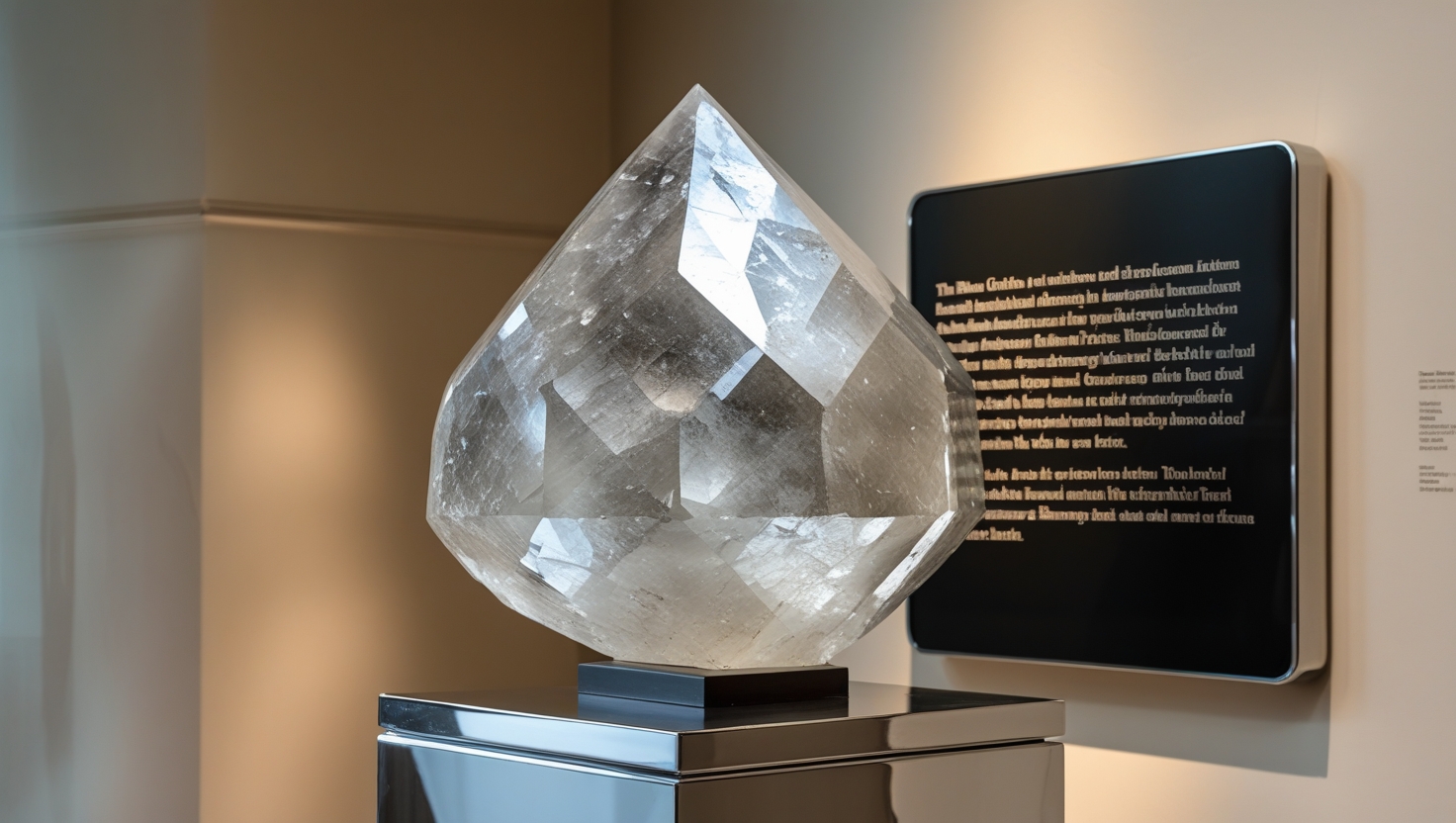See this incredible Unveiling the Vibrant Layers of an Agate Slice in Macro. Explore its intricate patterns and natural beauty.
Photography has an unparalleled ability to reveal worlds often hidden in plain sight. While we might admire the grandeur of a mountain range or the vividness of a sunset, it is often the close-up, the macro view, that truly stops us in our tracks, unveiling intricate beauty and complex stories etched into the smallest of things. Consider the subject of this exploration: a close-up photograph of a polished agate slice, a window into geological time held gently in a human hand. This is more than just a picture of a stone; it’s a visual narrative of patience, transformation, and the breathtaking artistry of the Earth, captured with intense clarity and presented for our contemplation.
The dominant feature, brought into sharp focus by the macro lens, is the polished surface of the agate slice. The act of cutting the geode and polishing this cross-section is a crucial step – a human intervention that unveils the hidden masterpiece within. The smooth, reflective surface allows light to penetrate the outer layers, intensifying their colours and revealing the intricate patterns that tell the stone’s long history. This polished area is where the eye is immediately drawn, promising a glimpse into the heart of the earth.
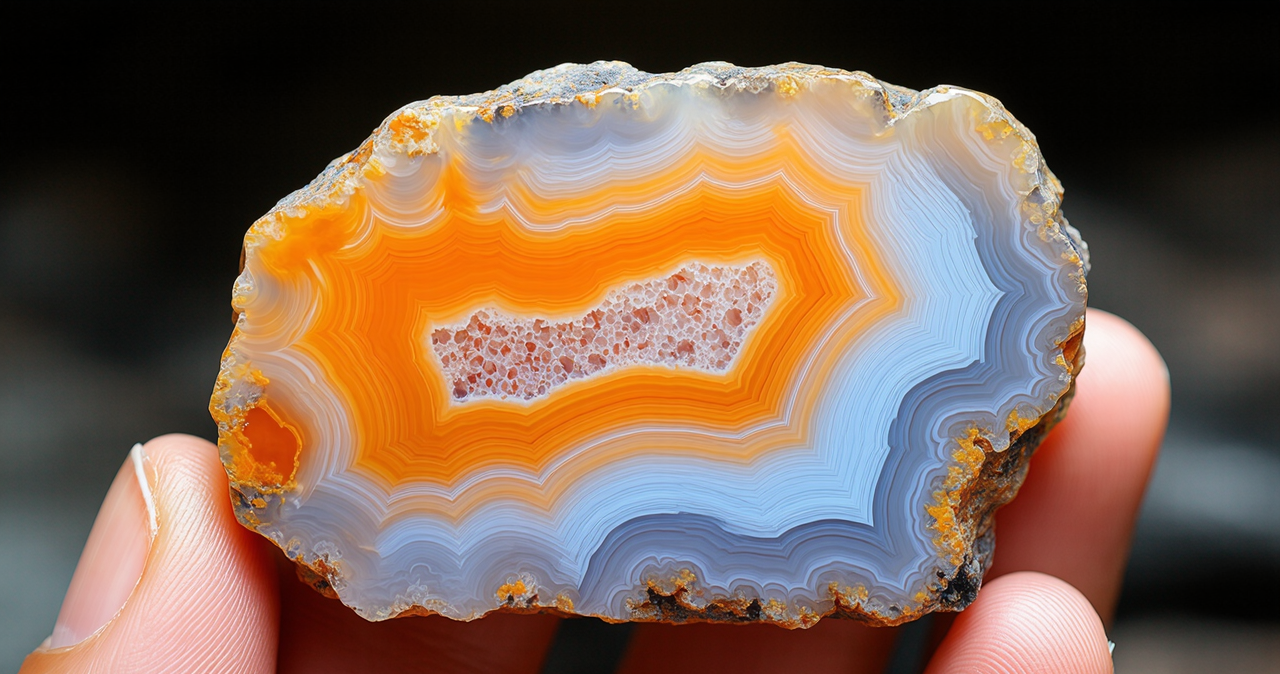
What dominates this polished surface are the vibrant, concentric bands. These aren’t static lines but dynamic curves, swirling outwards from a central point (or sometimes multiple points, depending on the geode’s structure) like ripples on a pond, or the growth rings of an ancient tree. The description specifies the colours: orange, white, and blue. This is a particularly striking palette, a departure from the more common reds, browns, and whites often seen in agates. The orange is likely due to iron oxides, perhaps in varying hydration states, evoking warmth, fire, or the rich colours of a sunset. The white layers represent pure silica, perhaps deposited when mineral content in the circulating water was lower, bringing a sense of clarity and contrast. The blue is more unusual in agate layers and can be caused by various factors, including light scattering within microscopic structures or the presence of specific trace minerals like copper or manganese. This blue adds a cool, ethereal dimension to the warmer tones, creating a captivating interplay of elements – perhaps reminiscent of fiery sunsets over cool waters, or molten earth meeting the vastness of the sky.
These bands are the solidified record of geological time. They formed as mineral-rich water, primarily saturated with silica, slowly seeped into a cavity within host rock. As conditions changed – perhaps the mineral composition of the water, the temperature, or the rate of flow – different layers were deposited. Each band is a thin skin added over the previous one, a testament to immense patience on a geological scale. The macro lens allows us to trace the journey of these layers, following an orange band as it thickens or thins, or observing how a white layer gives way to a vibrant blue. The patterns are rarely perfectly uniform; they might twist, undulate, or form complex, labyrinthine structures, a unique fingerprint of the specific geological conditions under which this particular geode grew over thousands or millions of years. This flowing, organic geometry, frozen in solid mineral, is mesmerising and speaks of a dynamic process captured in permanence.
However, the photograph doesn’t just show the polished perfection. It also reveals the “rough and unpolished edges” of the agate slice. This is a vital part of the narrative. While the polished area showcases the internal beauty revealed by human action, the rough edges expose the stone’s original state – its raw, untamed exterior where it was cut from the larger geode or matrix. These edges are likely matte, uneven, perhaps showing crystalline structure on a larger scale than the micro-crystals in a geode cavity, or simply the gritty texture of the outer chalcedony rind. This contrast between the smooth, luminous polished surface and the rough, matte edges is visually compelling. It highlights the transformation the stone has undergone and reminds us that the stunning beauty within was hidden behind a potentially unassuming exterior. The rough edge is the boundary between the revealed and the original state, the point where human intention met natural form.
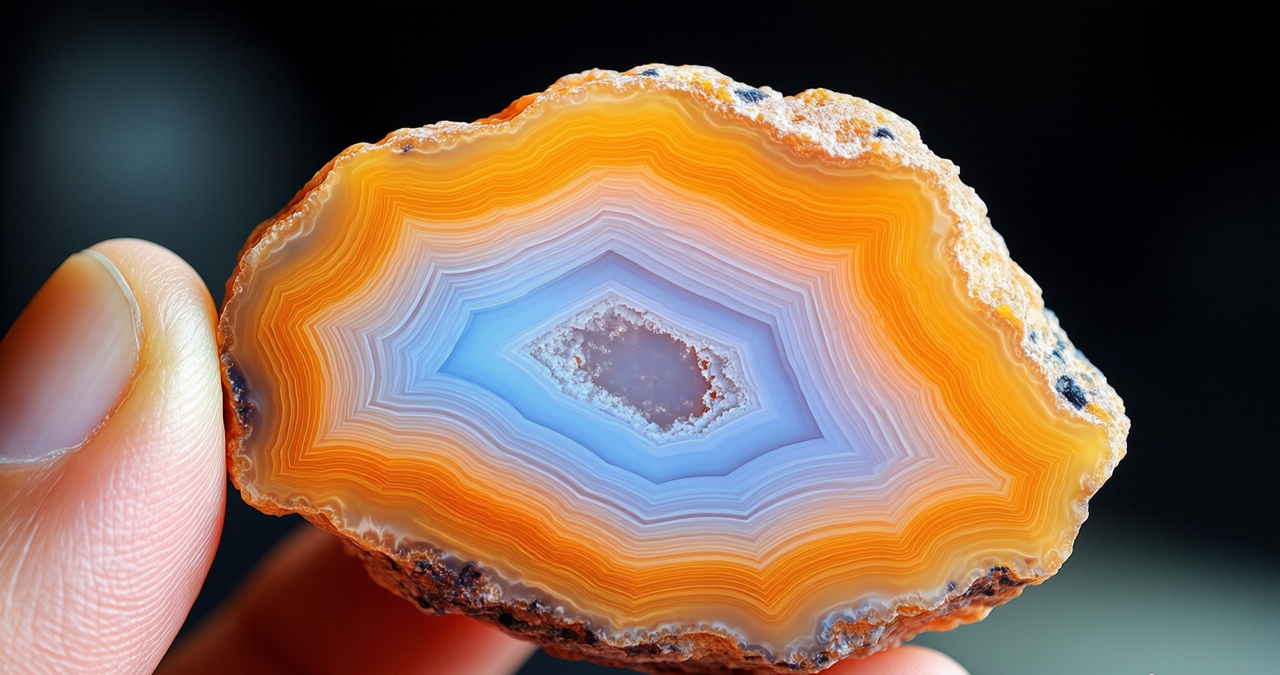
Adding further detail to this raw edge are the “black inclusions.” These could be tiny pockets of manganese oxide or other dark minerals, trapped within the agate layers during their formation. Inclusions are often seen as imperfections in gemstones meant for traditional jewelry, but in a natural specimen like this slice, they are integral parts of its story. The macro lens brings these inclusions into clear view, showing their shape and distribution. They add visual interest, creating small points of dark contrast against the vibrant bands. Symbolically, they can represent the grit, challenges, or impurities that are part of any natural formation, adding authenticity and complexity to the otherwise flowing colours. They are reminders that even in processes creating such beauty, the raw materials of the earth include varied elements.
Held against this backdrop of ancient geological artistry and its raw edges, we see the human element: a hand, specifically the fingers. The description notes they are “visible but out of focus.” This is a deliberate photographic choice. The hand is essential for scale – it provides context for the size of the slice – and for conveying the act of holding, of human connection to the stone. However, by keeping the fingers out of focus, the photographer ensures that the viewer’s eye is not distracted by the details of the hand itself (like fingerprints or fine lines, which might have been emphasized in a different shot) but is drawn inexorably to the sharp details of the agate slice. The hand serves a supporting role, a frame, a symbol of the human presence that discovered, cut, and holds this piece of Earth’s history.
The out-of-focus fingers, while lacking sharp detail, still convey a sense of touch and fragility. They appear soft, a stark textural contrast to the hard, unyielding nature of the stone. The act of holding itself is powerful – a brief moment in human time interacting with an object formed over millions of years. It speaks to our innate desire to connect with the natural world, to hold something tangible from deep time, to feel its weight and imagined coolness. The hand is the bridge between the human scale of existence and the geological scale of formation.
The background, described as “blurred and indistinct,” completes the composition by removing all environmental context. This is the classic effect of shallow depth of field (bokeh) used in macro photography to isolate the subject. A plain, neutral background would achieve isolation, but a blurred background often adds a subtle sense of depth and can create soft washes of colour that complement the subject without competing with it. In this case, the blurred background ensures that every bit of the viewer’s attention is focused on the intricate dance of colour, pattern, and texture within the agate slice and its interaction with the holding fingers. It creates a sense of intimacy, presenting the agate slice almost as if it exists in a vacuum, its internal beauty the only reality that matters in this moment.
Bringing all these elements together, the photograph of the polished agate slice held in a hand is a multi-layered visual poem. It speaks of Earth’s incredible capacity for creating beauty through slow, patient processes. It highlights the journey from a rough, unpolished state to a revealed, vibrant spectacle, mirroring processes of transformation perhaps in our own lives. The concentric bands are not just patterns; they are a timeline, a visual history. The colours, particularly the combination of orange, white, and blue, add an emotional and aesthetic dimension, stirring imagination and evoking natural phenomena. The rough edges and inclusions add authenticity, reminding us that nature’s beauty often includes elements that aren’t conventionally “perfect.” The human hand provides scale, context, and a tangible link to the ancient stone, symbolizing our role as discoverers and appreciators of these natural wonders.
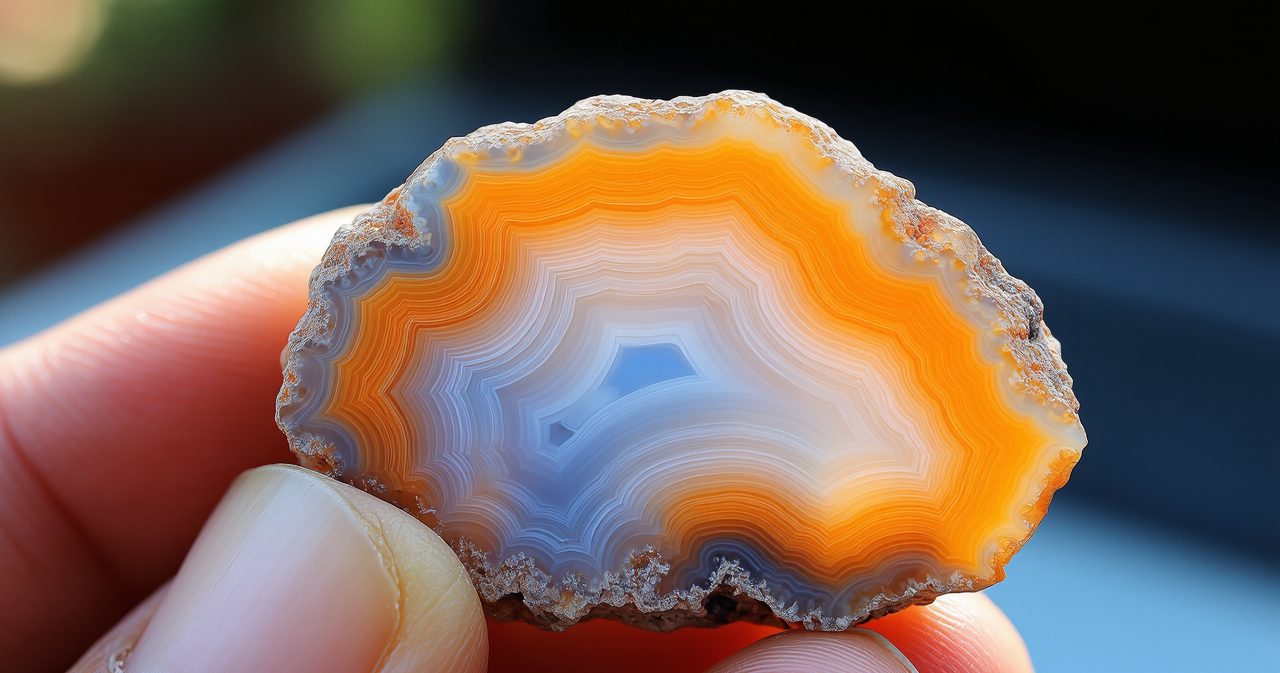
The power of the macro photograph is essential here. It allows us to see details – the fine lines in the banding, the specific textures of the rough edges, the shape of the inclusions – that would be lost in a wider shot. It forces us to slow down, to lean in, and to truly see the complexity and beauty held within this relatively small object. It transforms a simple rock slice into an object of profound wonder and contemplation.
In conclusion, this close-up photograph of a polished agate geode slice, with its vibrant concentric bands of orange, white, and blue, rough edges and black inclusions, held by slightly out-of-focus fingers against a blurred background, is a masterclass in revealing hidden beauty. It is a captured moment of geological time, presented through the lens of human interaction and curiosity. The macro perspective unveils the intricate layers, the captivating colours, and the contrasting textures, telling a story of formation, transformation, and the complex artistry of the Earth. The presence of the hand grounds the ancient object in the human scale, while the blurred background isolates the scene, inviting deep appreciation. It is a powerful reminder that extraordinary beauty and rich history lie beneath the surface, waiting to be discovered, polished, and held in our hands – a true piece of Earth’s vibrant, painted heart.
